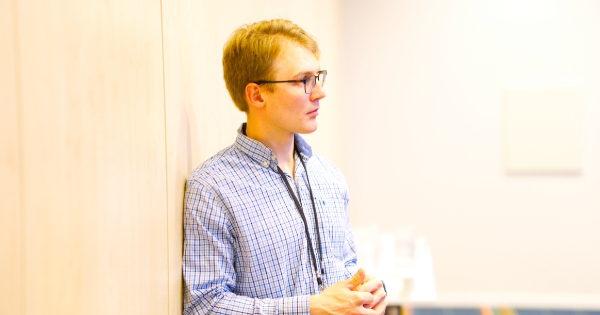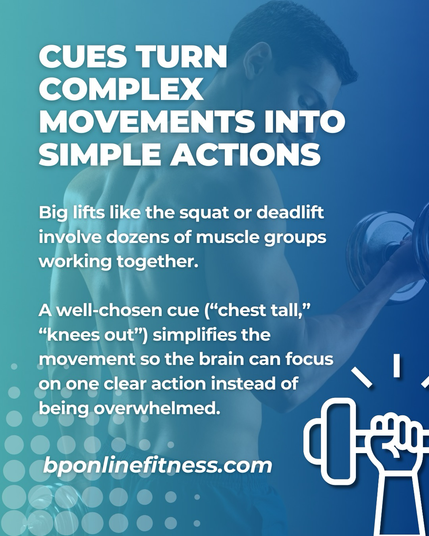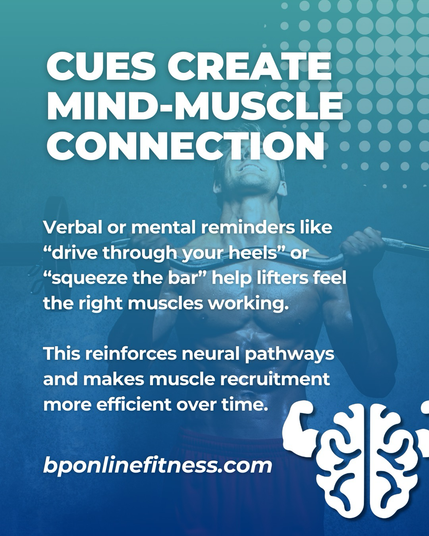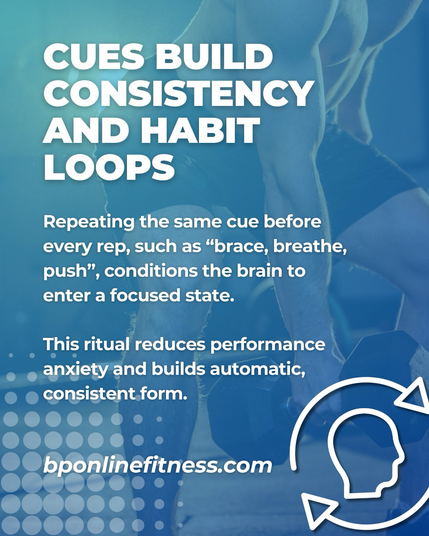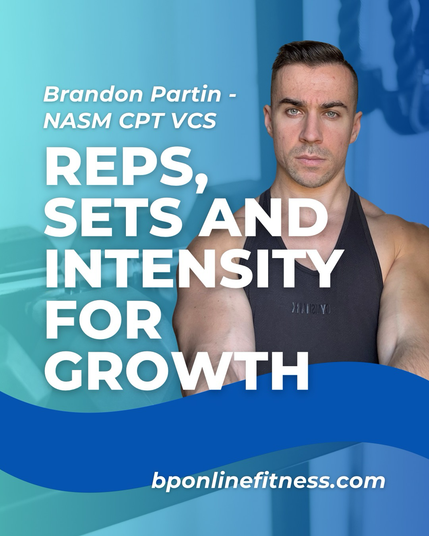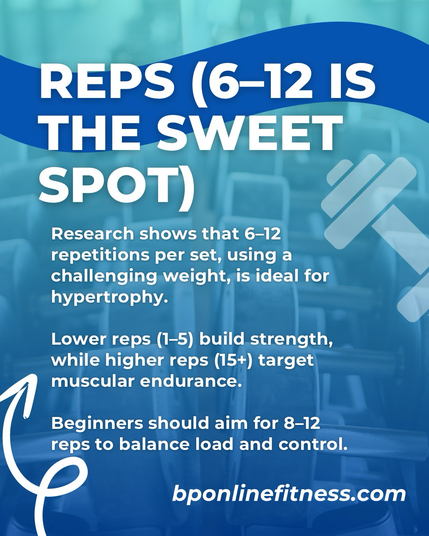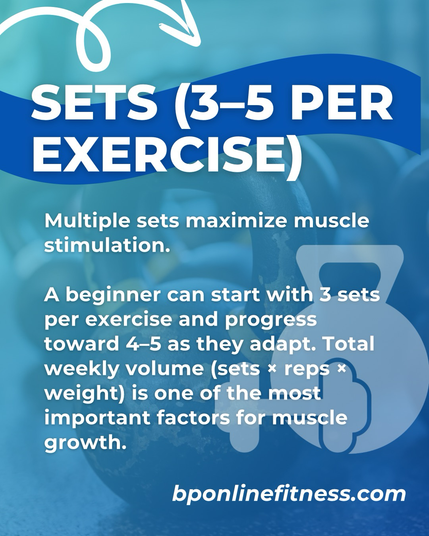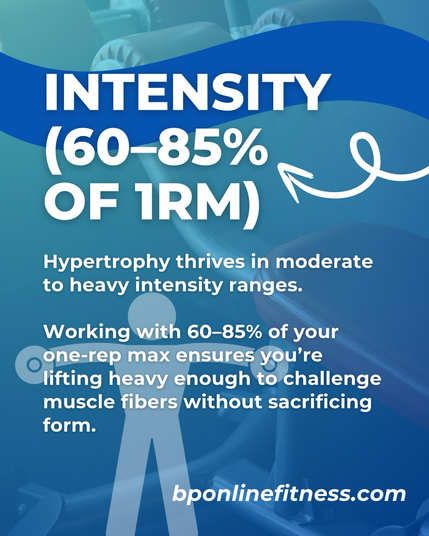Redefining Women’s Health: Menopause, Methodological Clarity
Author(s): Scott Douglas Jacobsen
Publication (Outlet/Website): The Good Men Project
Publication Date (yyyy/mm/dd): 2025/06/10
A Crash Course in Medical Myths: In Treating Menopause And Perimenopause and Throughout Our Medical Care
Award-winning science writer Amy Alkon exposes the systemic failures in women’s health care—highlighting how outdated guidelines, myth-based assumptions, and poorly trained doctors leave women misdiagnosed, dismissed, or untreated. In her new book, Going Menopostal, she helps readers cut through the noise, understand the science behind hormone therapy and metabolic health, and make informed, individualized decisions about aging. Her empowering message is to take charge of your body, question medical assumptions, and embrace aging with vitality, curiosity, and evidence-based action.
Why Most Doctors Can’t Evaluate the Science
Scott Douglas Jacobsen: Let’s start with a core issue: Why aren’t most doctors able to critically assess the science behind their recommendations?
Amy Alkon: They are not trained to read it critically. They don’t have meaningful coursework in statistics and methodology assessment. I was incredibly fortunate to be informally mentored by Dr. Sander Greenland, one of the world’s top epidemiologists and biostatisticians. He became my friend and would review my weekly science-based columns. I’ve got a long email from him on my wall that explains methodology and research flaws in beautiful, brutal clarity.
Jacobsen: How did this informal education shape your approach to writing Going Menopostal?
Alkon: Through him, I learned how to read studies critically—how to spot fraud, bias, poor methodology, and unjustified conclusions. He also sent me literature on medical errors, misconduct, and statistical abuse. That education changed how I view all medical science.
It taught me that responsible scientific thinking means examining a body of work—not just one study. To draw firm conclusions, you need multiple well-conducted studies across different populations.
I’m proud to say that in Going Menopostal, I don’t make sweeping claims. When the research is heterogeneous—different ages, drugs, study methods—I explain my thinking. I’m presenting my reasoning and encouraging readers to make their own decisions based on their health profiles.
Take heart disease, for example. It’s already the leading killer of people. It’s quickly becoming the leading killer of women, too. It will likely kill one in three women in the coming years. It’s one in five right now, but that number is rising.
Competing Health Risks
Jacobsen: How do you weigh competing health risks when making treatment decisions?
Alkon: So when we talk about risks—like the fear of breast cancer from taking hormone therapy—we have to balance that against the far higher risk of dying from cardiovascular disease.
Some of the research is more conclusive than others, but I saw enough strong support to justify my choice. I’m medically prudent. I’m conservative about drugs. I don’t want to take medication if I can avoid it. I don’t wish for medical treatments unless they’re necessary.
One of the things I include in Going Menopostal—to help people who don’t have a nerd like me digging into their specific issue—is a set of six questions to ask your doctor.
Can you explain the reasoning behind your diagnosis and the treatment you recommend?Could other conditions be causing my symptoms?What are the risks of this treatment—for someone like me?Are there safer, less invasive alternatives?What can I expect during the treatment and recovery?Do I need this now, or could I wait—or possibly go without the treatment?If your doctor isn’t explaining things clearly, ask them to explain until you understand. If needed, schedule another appointment or phone call. You can’t give informed consent if you don’t fully understand what you’re consenting to.
Informed consent is not optional—it’s legally and ethically required in medicine. Doctors are obligated to explain things in plain language.
Advice for Unheard Women
Jacobsen: What advice do you have for women who feel dismissed or unheard by their doctors?
Alkon: But you owe it to yourself and your health to advocate for your body. That may involve some conflict. Some friction. So what? That moment of discomfort is worth it.
Can you do this? In Unfckology*—my earlier book—I say: your feelings are not the boss of you. You can have a feeling and still choose not to act on it. You don’t have to say, “Okay, yes, I’ll do whatever you say. I’ll stay quiet.” No. You say, “F you, feeling.”
So what do you do? You focus on what you can control: yourself. That’s the growth. Yesterday, you may have stayed silent. But today? You spoke up. You were brave. That’s powerful. You need to give yourself credit, give yourself a big pat on the back, and say it out loud. I talk to myself and say, “Good job, self.” It’s funny, makes me laugh, and snaps me out of whatever spiral I’m in.
Going Menopostal does more than tackle the science of diagnosis and treatment for menopause and perimenopause. It shows how to live healthfully and fully in your later years. That means embracing evidence-based approaches to eating and exercising but making them doable.
As an advice columnist for all those years, I’d offer options: “You could do this, or you could try that.” And while writing, I’d talk to myself—like, Amy, is anyone going to keep taking this advice? If the answer were no, I’d call myself out: You’re being a jerk, Alkon. Go think up something useful. It’s the same with lifestyle advice, especially when it comes to eating and exercise. It has to be doable.
Navigating Nutritional Science
Jacobsen: How do you navigate nutritional science when so much of it seems contradictory?
Alkon: For many people, eating a low-carbohydrate, well-formulated diet—higher in healthy fats and adequate protein—is the most nutritious and sustainable way to eat across the lifespan. It helps prevent blood sugar spikes, excessive insulin secretion, and insulin resistance. That resistance contributes to a condition known as inflammation.
Chronic, low-grade inflammation builds up in the body over time. It’s like there’s always a slow fire burning. So, when your immune system needs to kick into gear, it is often tired, dysregulated, and weakened in response to a serious event. It can’t mount a proper defence, and that’s a huge problem.
These are foundational drivers of suffering and chronic illness. Cardiovascular disease, metabolic syndrome, and other severe conditions stem from this internal wear and tear. As for the old “lipid hypothesis”—that cholesterol alone causes heart disease? That has not been definitively proven. It is increasingly clear that the real culprits behind cardiometabolic disease are high blood sugar, elevated blood pressure, insulin resistance, and the constellation of risk factors known as Syndrome X—now more commonly called metabolic syndrome.
One of the most disturbing aspects I cover in my book is that, while we all share basic anatomy—such as livers, kidneys, and hearts—there are significant physiological differences across populations. In menopause and perimenopause research, most of the data is based on middle-class white women.
Black individuals tend to have lower triglycerides and higher HDL (the so-called “good” cholesterol). That sounds great—except that if you apply white-centred diagnostic standards to Black patients, they can appear metabolically healthy when they are not. That leads to underdiagnosis and undertreatment.
This is a tragedy because Black Americans—and other people of colour, including Hispanic populations and certain Indigenous groups like the Pima—have a significantly higher risk for diabetes, heart disease, and kidney failure. So when the guidelines are wrong—or not population-specific—that is not just an oversight; it is dangerous.
Most doctors are just following the “practice standards” they’re given. But when those standards are built on flawed, non-inclusive research? The whole system fails. They don’t know all this science. Remember, doctors are not trained to read and evaluate scientific research in medical school. So, they have to rely on practice guidelines—standards that may be outdated, incomplete, or based on flawed data.
LDL and Heart Disease Risk
Jacobsen: How can we ensure population-specific data guides treatment decisions?
Alkon: The real issue is that our institutions have failed. Medical education doesn’t train doctors to read research critically. Doctors don’t have the time to dig into studies—and even if they did, most aren’t taught how to evaluate study design, bias, or statistical flaws.
And the consequences are enormous. I see it. I recently had eye surgery, and sitting in that waiting room. I looked around at all the people around me—so many of them suffering from preventable conditions. It broke my heart. They’re old. They have diabetes. They’re obese. They’re weak.
The Key to Muscle Loading
Jacobsen: What about strength training?
Here’s the reality: what you do for muscle, you do for bone. Bone responds to mechanical loading—the stress placed on it when muscles contract forcefully against resistance. That means lifting weights.
You must significantly challenge your muscles to build or maintain muscle and bone. Slow-speed weight training is the most effective, powerful, and efficient form of this. That means lifting weights that are heavy for you, using a controlled motion—about five seconds up, five seconds down—with no pumping or jerking. Pumping is how people get injured. The goal is not to fling your arm up; it’s to create deep muscular engagement.
You continue the set until you reach muscle failure, where you cannot do one more rep with proper form. That’s key. When you hit failure with good form, you’ve created microtears in the muscle. That sounds bad, but it is the foundation of muscle repair and growth. Over the next day or two, your body rebuilds the muscle stronger.
And here’s why that matters: bone and muscle are metabolically active tissues. They help regulate insulin sensitivity, reduce inflammation, and fight off the effects of aging—including that creepy visceral fat, which wraps around your organs and tries to kill you. Strength training helps you fight that.
So again, as I was writing the book, I asked myself, “What’s doable?” Because the average person isn’t a saint. We’re lazy chimps. We need something realistic and repeatable. That’s why I recommend just one set of muscle failures per movement. That’s it. I do eight of these a week—two on Sunday. That’s all. And I’ve got visible muscles. You should feel my arms. It’s wild.
I use what I call my Barbie gym. I’ve got this graveyard of weights on the living room floor—different dumbbells in a pile. You don’t need fancy machines or 37 different exercises.
When you do these full-body movements—like squats or rows—you send a systemic signal throughout your body. You’re not just working your biceps and ignoring everything else. Even without gym equipment, I’m the healthiest I’ve ever been. And to be honest, I’d been scared. I’m a slow writer and have spent years sitting in a sedentary chair. I’d get up occasionally, but it wasn’t consistent activity.
I used to run seven miles three times a week, but I wasn’t putting weight on my bones as I needed to. At some point, I went to walk to the office supply store near me—about half a mile away. I walked one long block, and my back was killing me. I thought, “Oh my god, you’ve ruined your body. You sat in your chair for years and are now destroyed.”
But no—I hadn’t ruined it. I caught it in time. Once I started strength training with weights, I rebuilt my strength. All of this is vital. The two key things you need to do are:
Eat a low-carb, adequate-protein, sufficient-fat diet.Lift weights with intensity.For protein specifically, you need at least 1.2 grams per kilogram of body weight per day. That’s the minimum for preserving muscle as you age. The U.S. government recommends 0.8 grams per kilogram, which is outdated and too low—especially for older adults. If you don’t get enough protein, it does not matter how much calcium you take—you could eat a dairy aisle’s worth—and it still won’t build bone properly. Protein is required for calcium to be incorporated into bone.
What’s so terrible is that if you’re not an obsessive science nerd like me—if you’re not someone who stayed home on every holiday, including Christmas and Thanksgiving, to read medical studies and write a book—you’re left without recourse. I poured every molecule into this project because the science had to be right.
Be careful. With my other books, if I got something wrong, maybe you’d have a bad date. But if I get something wrong in this book—on medicine—you could die. I felt that weight. Writing this book was a terrible responsibility.
I’ve called it the most critical and stupidest thing I’ve ever done because it was terrifying. I joke that I forgot to take endocrinology when I didn’t attend medical school, but I had to teach it anyway. Here’s what happens in med school: You’re taught to believe things because someone important at an expensive institution said them. The information ends in textbooks, and you’re expected to accept it.
But as an outsider, I’m constantly asking, “What’s the process here?” I look deeply. I cut up endocrinology textbooks and taped them to the walls of my house. My shower? It’s a giant study space. I’ve got a clawfoot tub, and the bathroom walls are papered with medical diagrams and citations.
That’s how I work.
Jacobsen: Can you give us an example of this?
Alkon: And that’s how I discover things that even major researchers in the field miss—because they’ve been taught to believe. They’re not always looking critically. One of the most dangerous, persistent confusions I found is between medroxyprogesterone acetate (MPA)—a synthetic progestin used in older birth control pills—and real, bioidentical progesterone.
They’re not the same thing, but a famous researcher conflated them in a significant paper. Then, everyone else copied her. They didn’t even check the citations. They just assumed, “She’s important; she must be right.”
But I went to the citations. And what did I find? Those scary side effects she blamed on progesterone were from MPA—not real progesterone. So here’s this beautiful, natural hormone—progesterone—being falsely accused of harming women when, in fact, it’s essential for our well-being. During pregnancy, a woman’s body produces ten times the amount of progesterone she makes during a typical menstrual cycle. If it were dangerous, pregnancy would be lethal.
But it’s not. Progesterone is a hormone that promotes calmness and supports sleep. And when I finally got access to it—after fighting tooth and nail to get oral micronized progesterone, the FDA-approved form—I got my sleep back.
And that was huge. Before perimenopause, I could put my head on the pillow at night and fall asleep instantly. I’d wake up at 6 a.m. feeling rested and wonderful. No effort. But in perimenopause—that transition phase to menopause—I started waking up five or six times a night. It was not very good.
It was so horrible. I had terrible brain fog—because I wasn’t getting sleep. And here’s why that matters: there’s excellent research. Your brain shrinks during deep sleep, allowing cerebrospinal fluid to wash through and clear out metabolic waste.
Without sleep, that cleanup doesn’t happen. That fog you feel? That’s real. And over time, it contributes to severe neurological decline. In the U.S., doctors typically don’t prescribe the 300 mg dose of oral micronized progesterone. That’s the dose used in France since 1980, and it is effective and safe. But here? It’s rarely given. Why? Not because of any rigorous trial showing that 200 mg is better than 300 mg. No, it’s based on inertia, cost, hearsay, and outdated studies that arbitrarily tested lower doses.
Let’s be clear: progesterone—the real thing, not synthetic progestins like medroxyprogesterone acetate (MPA)—is a very safe hormone. Unless you have rare conditions like liver ascites (fluid buildup in the abdomen) or extremely low blood pressure, it has fewer side effects than aspirin.
The FDA-approved form—Prometrium, or its generics—is delivered in peanut oil, so if you’re allergic, you’ll need it compounded in another base. But compounded medications can be the Wild West. That’s why I recommend using only accredited compounding pharmacies—the ones certified by the Pharmacy Compounding Accreditation Board (PCAB). Those are your best bet for getting the correct dose and an uncontaminated product.
Here’s another problem: Most people do not know how their body metabolizes drugs. Are you a rapid metabolizer? A slow metabolizer? Most doctors do not test for that. So you don’t know how much progesterone you need to protect the endometrium—the uterine lining—especially during perimenopause, when estrogen levels are spiking and crashing, and you’re often not ovulating. That means you’re not producing progesterone naturally.
So, how much do you need to replace it? We don’t know exactly, but we do know that 300 mg is safe and effective, benefiting bones, cardiovascular health, sleep, mood, and other aspects of overall well-being. In France, it is even used as a mild anesthetic. It is that safe.
Fighting for Evidence-Based Therapies
Jacobsen: Why do you think patients need to fight so hard for evidence-based hormone therapy?
Alkon: Most gynecologists are trained in maternity and reproductive health, not menopause medicine. That’s starting to change, slowly, because menopause is finally entering public discourse. But right now? Most women are undiagnosed, misdiagnosed, or dismissed altogether.
They don’t recognize that what they’re experiencing is perimenopause. The rage. Insomnia. The brain fog. I got horrible motion sickness in my 40s—I couldn’t ride in a car without wanting to throw up my shoes. That’s a symptom of hormonal imbalance. I know this from reading the research. Most women don’t. And that’s terrifying.
Why? Because no one properly diagnosed them. Because the science is not driving the conversation. This area is riddled with so many myths—it breaks my heart. That’s why I wrote this book. I fought three major battles with the Kaiser:
To get FDA-approved progesterone—not medroxyprogesterone acetate, which is on their formulary.To obtain the correct dosage, 300 mg has been used effectively in France for a long time.To get it covered by my insurance.Those were serious fights. Most other patients are not in a position to fight like that. So they’re being misled, mistreated, or left untreated—and they’re at risk. That’s devastating.
I now eat a carnivore diet—fish, meat, eggs, butter, and ghee. I do this because it reduces inflammation. I avoid sugar and flour, which provoke inflammation and drive insulin resistance, a broken insulin response that leads to chronic inflammation and, eventually, the inability of our immune system to muster adequate defences.
This way of eating helps me maintain a metabolically healthy lifestyle. I take supplements to compensate for any nutritional deficiencies that the carnivore diet might leave behind. It was sad—but I gave up bacon and pork rinds. I love pork rinds—they’re so delicious. But I had eye surgery, and I needed to go with the whole SWAT team on any source of inflammation. I had to bring it as low as possible.
Here’s something interesting about forming habits: the first time you don’t eat your beloved greasy three strips of bacon for breakfast, it sucks. But then you adapt. I started eating smoked herring heated up with butter on top. People might find that gross, but it’s high in omega-3s and low in omega-6s (unlike hamburger, which is higher in omega-6).
I had been eating sardines until I discovered they were weirdly high in omega-6s. So I cut them. I also cut out chicken thighs, which I loved but also have high omega-6s. Nina Teicholz brilliantly wrote about this in her book The Big Fat Surprise. She explains why industrial seed oils are harmful—they promote inflammation and are a significant contributor to the problems in the modern diet.
This is how I’ve found a way to be healthy as I age. Because aging is this gradual erosion, it’s inevitable. So, I want to minimize the impact as much as possible. I’ll be honest—I’m a big weenie. I’m not good at suffering. A cold? I act like I’ve been diagnosed with a terminal disease. I’m not brave compared to others—I know that about myself.
So it’s important to me to do what I can now. That’s where habit formation comes in. That first day—skipping the bacon, not eating the pork rinds—it sucked. But then I had the herring. How I prepare it—microwaved, lightly heated—is delicious when you don’t overcook it.
Everything I make is fast. I don’t cook; I heat. If it takes more than two steps, I’m out. Salmon? Throw it in a pan with ghee—which has a high smoke point—flop-flop, sear it, and it’s done. Hamburger? I cook it in the air fryer because it’s even faster. And this stuff is delicious. That matters. I eat fatty food because it’s satiating. I recently ordered trout because it was on sale—but it turned out to be super low in fat. I was hungry all day. I thought, “We’re gonna eat this…and then we’re gonna eat something else.”
So when I help people—and do medical coaching for friends (I’m not a licensed professional, to be clear)—I always start with this question: What are you willing to do? You can’t just say, “Here’s what I’d do.” That doesn’t work. The question is: What will YOU do, based on your life, your habits, and your self-discipline? That’s how I approach it.
In fact, in 2020, the American College of Cardiology finally acknowledged—after years of pushing harmful, outdated advice—that the claims against saturated fat are not supported by high-quality evidence. They did not say it bluntly, but science shows that the real culprit behind metabolic disease is not saturated fat but refined carbohydrates.
Sugary and starchy carbs—bread, desserts, pasta, potatoes, juice—drive excess insulin secretion, which leads to fat gain and inflammation. A low-carb diet—is called ketogenic because it refers to ketosis, the state where your body burns fat for fuel instead of glucose (blood sugar). You must consume 30 grams of carbohydrates or less daily to maintain ketosis. You track this through blood testing and by monitoring your physical signals.
Now, some people can’t do this alone. If you have diabetes or another serious condition, you need a doctor. But here’s the challenge: You must find someone who understands nutrition science. That is rare. And it’s expensive.
The same applies to resistance training: safety is paramount. Maintaining healthy muscle is vital for healthy aging. Even one day of sedentary behaviour can negatively impact your metabolic and immune systems. I try never to be sedentary. After my eye surgery—a corneal endothelium transplant—I wasn’t allowed to lift weights, and that worried me. So I asked my doctor, “How soon can I walk?”
Running was off-limits, and I’m a fast runner. I usually do 20-minute sprints in the morning, often in front of the TV, or I go out early to get morning light exposure on my retinas, which helps regulate my circadian rhythm. So, while I recovered, I walked. Back and forth across my living room—hundreds of times a day—as fast as was safe for my healing eye.
The corneal endothelium is a single-cell layer that regulates fluid in the eye. I had a genetic disease—thanks, Mom—called Fuchs’ dystrophy (Fuchs’ with an apostrophe S). These cells die off and turn into trash cells called guttate, which sounds too much like frittata—which is excellent if you don’t overcook it, and most people do.
If untreated, you go progressively blind. I was grateful to get the transplant. But I also wanted to preserve it. I couldn’t lift weights or run—but I could walk. So I did.
Jacobsen: How did you handle that emotionally?
Alkon: Now, I was worried. I’d been doing resistance training every day. What will happen to my muscles and bones during this period of inactivity?” A study shows how quickly you lose muscle and strength when you stop training.
There is a study on this phenomenon, known as detraining. If you stop lifting weights for a while but start again within a specific period—maybe ten weeks, I think—you can build your strength back faster than if you were starting from scratch. I do not remember the exact timeline, but that’s the general idea.
At first, I was weak. I could not lift the weight I usually do. However, you must be patient with yourself. That’s one of the most significant aspects of any health journey: self-compassion. And I’m not great at that. My family are Jews from Michigan—pure Ashkenazi Jews. We have a brutal work ethic. I will drag myself to the computer and work if I’m not dying. Coffee, determination—whatever it takes.
But during my recovery, when I was not feeling well, I had to rethink that. I’d say, “Okay, your goal today is to get to the computer and do this one thing.” And sometimes, I was too sick to do that. So I’d remind myself, “You’re a hard worker. You need to rest.”
Jacobsen: What about age and the average person’s dietary habits?
Alkon: When we’re younger, our bodies are robust. We can get away with eating the Standard American Diet—all those processed foods high in sugar and refined carbs. But over time, your body stops being able to amortize the damage. And then? You get sick.
You gain fat. Your blood sugar goes up. Your blood pressure follows. And once cardiovascular disease sets in, that’s it—you can’t get your old health back. You can’t reverse the arterial plaque that forms from years of high blood pressure and chronic inflammation driven by diet.
So, prevention matters. Look at older people who are suffering—obese, dealing with diabetes, with other metabolic diseases—and realize: That is the Ghost of Christmas Future. That is your possible outcome. That’s why I’m taking the steps I’m taking.
Here’s the thing: You don’t need to adopt someone else’s rules if you do not have issues in a particular area. For example, do you sleep fine after eating before bed? Then eat. Do what works for you. The rule should always be: listen to your body, not someone else’s fear-based checklist.
Jacobsen: Now, what about intermittent fasting? Like 16:8 or 18:6 fasting windows?
Alkon: I do not know enough about it to give an informed opinion. I try to model what doctors should do, which is to say “I don’t know” when I genuinely don’t know. I’ve read some about fasting, which may have benefits and downsides, depending on the individual. However, I haven’t conducted a thorough enough review of the research to speak confidently or publicly about it. So, for now? I don’t know. I also don’t skip meals. I’m too much of a hedonist. Fasting may be beneficial, but I’ll need to investigate it further before I weigh in.
Jacobsen: What is your vision of empowered aging, especially for women?
Alkon: The goal is to stay you, just with some wrinkles. And I see that now. I see these vital older women lifting weights and doing pull-ups at 80—living active and meaningful lives. They’re not just grandmas in aprons anymore. They’re strong, sharp, and visible. These days, grandma is me. But I feel like the same me I was at 8, or 20, or whatever. That’s the goal: to be you—as much as possible—with the robust health you had when you were younger. You do that through protective measures: a smart diet and adequate exercise.
Jacobsen: Amy, thank you very much for your time today, your expertise, and your honesty. It was a pleasure to meet you.
Alkon: It was great. You’re interesting and innovative.
Jacobsen: Excellent. Thanks so much, Amy. Take care.
Alkon: You too. Bye.
Last updated May 3, 2025. These terms govern all In Sight Publishing content—past, present, and future—and supersede any prior notices. In Sight Publishing by Scott Douglas Jacobsen is licensed under a Creative Commons BY‑NC‑ND 4.0; © In Sight Publishing by Scott Douglas Jacobsen 2012–Present. All trademarks, performances, databases & branding are owned by their rights holders; no use without permission. Unauthorized copying, modification, framing or public communication is prohibited. External links are not endorsed. Cookies & tracking require consent, and data processing complies with PIPEDA & GDPR; no data from children < 13 (COPPA). Content meets WCAG 2.1 AA under the Accessible Canada Act & is preserved in open archival formats with backups. Excerpts & links require full credit & hyperlink; limited quoting under fair-dealing & fair-use. All content is informational; no liability for errors or omissions: Feedback welcome, and verified errors corrected promptly. For permissions or DMCA notices, email: scott.jacobsen2025@gmail.com. Site use is governed by BC laws; content is “as‑is,” liability limited, users indemnify us; moral, performers’ & database sui generis rights reserved.
#hormoneTherapy #informedConsent #medicalMyths #metabolicSyndrome #strengthTraining
